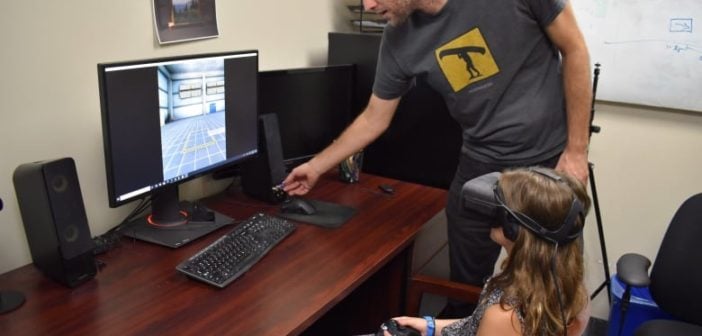The University of Guelph introduces a VR simulation that could drastically improve a child’s safety while crossing busy streets.
According to research published by Parachute Canada, a national Canadian charity foundation dedicated to accident prevention and awareness, injuries among child pedestrians are the primary cause of injury-related deaths for Canadian youth at or under the age of 14. VR simulation is a good way to tackle this issue.
“The parents tend to assume children are much more cautious than they are in fact,” says University of Guelph psychologist, Barbara Morrongiello; as reported by The Canadian Press.

In response to these ongoing safety concerns, Morrongiello and her team of researchers at the University of Guelph have begun introducing a brand new virtual reality program designed to educate children on the proper safety procedures when crossing a busy intersection. Using a VR headset to look around and a standard video game controller to move, kids are immersed in a virtual world complete with a two-lane road in which they must cross.
What’s the catch? Well, there is a hill or blind curve blocking the child’s view of oncoming traffic. Using their VR headset to lean and look around, users will have to adhere to proper road safety regulations in order to succeed.
“In our system, the children are fully immersed in the pedestrian environment,” continues Morrongiello. “So they basically wear 3D goggles and are actually in the environment, they’re not observing the environment. We can see their reaction time and their attention because we code where they’re looking and their speed of reaction.”

In order to lighten the mood and provide a comfortable environment in which to learn, a pop-up coach character will appear every so often to inform the child on their progress; praising their good decision-making skills and correcting their mistakes in a friendly manner.
“It was set up that way so the child can work independently. It’s a very tailored approach to learning. We try to make it so each child has a fun experience and wants to continue to play it.”
While it may be too soon to determine the long-term effects of this radical new education format, early reports point towards a promising future. A test involving 130 children, age 7 to 10, indicated that children who received virtual road safety training made 75-98% fewer mistakes than those educated in a conventional manner.

This isn’t the first VR program dedicated towards road safety, however. Researchers at the University of Alabama at Birmingham’s UAB’s Youth Safety Lab previously developed a 360-degree VR experience for Google Cardboard headsets in which children could practice road safety in the classroom. Morrongiello’s program, on the other hand, provides a much more in-depth simulation for children to interact with, complete with real-time user feedback.
The intuitive VR program is currently being translated into Hebrew at the request of an Israeli public health group who is interested in integrating the VR program into their own community. As these impressive results continue to roll-out, more organizations will no doubt begin to see the value of this potentially game-changing simulation.




